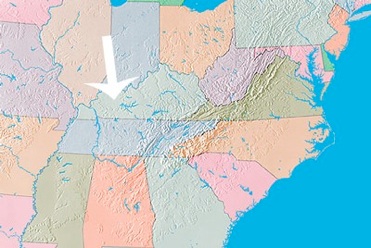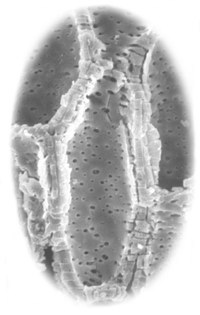Kentucky Shellmounds



One of the most important results was the recovery of small fragments of cucurbit (squash or egg gourd) from many layers in the shell mounds. It was present in the area well before the Cave occupations. This was the first time the plant had been confirmed in such an early archaeological context in eastern North America. At the time we felt that this indicated contact with Mexico and the diffusion of crops northward from there. This was an assumption based on our knowledge at the time. As it turns out, the assumption needed to be critically assessed. Today we know that these remaiins are from a native squash that was on its way to being domesticated, if not already domesticated. The final monograph on the project was published in 2005 (see my publications list).
Cucurbita rind micro-structure